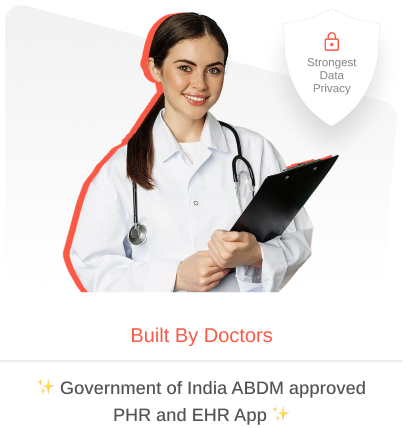Educating Patients on Patient Portals and Health Apps: A Step-by-Step Guide
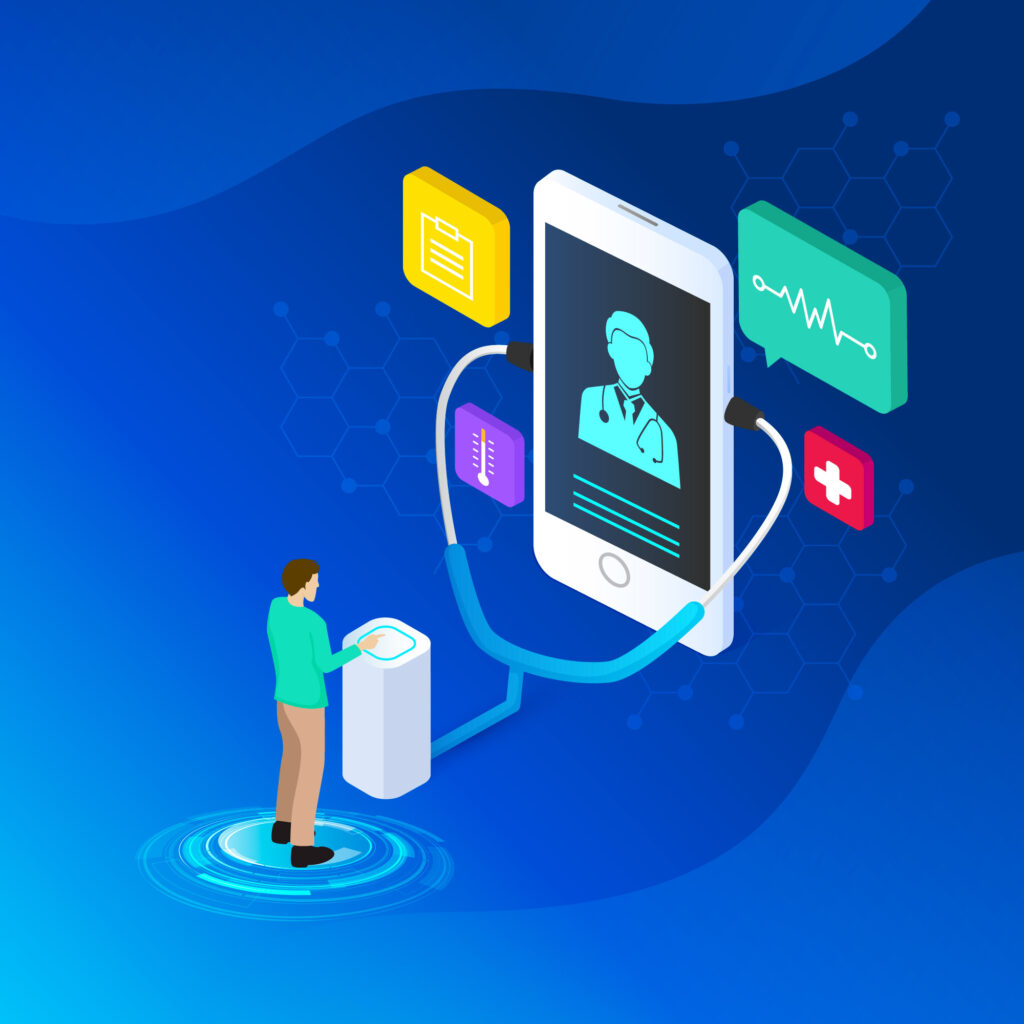
The rapid digital transformation of the healthcare system has revolutionized i.e. how medical services are delivered and consumed. From online appointment scheduling to real-time access to medical histories, technology allows both providers and patients in unprecedented ways. At the heart of this evolution are patient portals and mobile health applications—tools that put important health information directly into the hands of patients. Patient portals serve as secure digital ways where individuals can access their medical records, lab results, prescriptions and communicate with healthcare providers. Mobile health apps extend this functionality by enabling users to track vitals, set medication reminders, and monitor chronic conditions on the go. Despite their growing availability, the effective use of these tools depends largely on how well patients understand and engage with them. That’s why education of patient portals plays a very important role. Empowering patients to navigate these platforms confidently leads to better communication, improved treatment and more informed decision-making. Moreover, it improves the overall efficiency of the electronic health record systems and ensures smooth health information management. In this guide, we’ll explore a step-by-step approach to educating patients on using digital health tools, featuring Roojh—a modern, intuitive hospital management software built to simplify patient engagement and make digital healthcare more accessible to everyone. Why is Educating Patients Essential? As the healthcare system increasingly adopts digital tools, one challenge occurs in how patients know how to use digital health tools. Despite the availability of patient portals and mobile health apps, many patients struggle with accessing and navigating these platforms due to barriers like limited technological literacy, fear of data misuse, language limitations, and lack of reliable internet access, especially in rural areas. According to a 2023 survey by the Office of the National Coordinator for Health Information Technology (ONC), nearly 40% of patients reported feeling overwhelmed or confused when using online health systems for the first time. For elderly populations, this number increases significantly due to unfamiliarity with digital interfaces. This digital divide directly affects patient engagement in turn to health outcomes. When patients lack the confidence or knowledge how to use health technologies, they miss critical updates, delay medication adherence or skip follow-ups, all can affect recovery or chronic disease management. Educating patients addresses these gaps by promoting digital literacy and enhancing overall trust in the healthcare system. It transforms passive patients into active participants in their care journey, leading to improved communication, greater transparency and better management of personal health information. From a provider’s perspective, this also supports more efficient health information management. When patients know how to update their records, track their symptoms, or share relevant data through portals and apps, it reduces the administrative burden on clinics and ensures a more accurate and holistic view of the patient’s health history. In practical, solutions like Roojh offer user-friendly interfaces and step-by-step guidance that make the adoption of these digital tools easier. Hospitals using Roojh have seen a measurable increase in patient satisfaction and participation, simply by investing in basic onboarding and tech education during appointments. By closing the knowledge gap, patient education becomes the foundation of truly connected and patient centered digital care. Step-by-Step Patient Education Framework Step 1: Awareness and Introduction The first step in patient education is simply making them aware that these tools exist and can make their lives easier. Most patients still rely on traditional methods like calling the clinic or visiting in person to check appointments or access test results. That’s why creating awareness through multiple channels is essential. Hospitals and clinics using Roojh can leverage flyers at reception desks, SMS notifications post-appointment, and direct physician recommendations during consultations to introduce the benefits of patient portals and mobile health apps. This multichannel approach ensures patients are informed in a way that’s accessible to them. Highlighting features like 24/7 access to records, reduced paperwork, and faster communication can help patients understand the immediate benefits of using Roojh. Visual branding, such as posters with QR codes leading to the app download, can boost engagement at clinics. By positioning Roojh not just as a patient management software but as a personal health assistant, healthcare providers can build curiosity and motivate patients to take the next step. Step 2: Easy Onboarding and Registration Once awareness is created, the next important step is onboarding. The sign-up process should be simple, secure, and stress-free. Roojh streamlines this experience with one-click sign-ups and OTP-based logins, removing the common friction points that discourage new users. At the clinic level, front-desk staff or health navigators can guide patients through their first login. Hospitals can set up digital kiosks or assign tech-savvy staff to assist with app downloads and profile creation, ensuring no patient is left behind. Roojh’s intuitive design is built for inclusivity, offering an interface that doesn’t require tech expertise. Clean layouts, simple menus, and easy to understand icons make navigation more easy. Smooth onboarding sets the tone for a positive digital experience and reduces drop-off rates. When patients feel confident using Roojh from the start, they’re more likely to use it regularly to manage appointments, lab results, and prescriptions which are the key components of any good patient management software. Step 3: Hands-On Training Training patients to use health portals effectively ensures they fully understand the app’s capabilities and can maximize its use. Roojh encourages hands-on learning through a combination of group classes and visual learning tools. Hospitals can organize small workshops in waiting areas, where trained staff demonstrate how to book appointments, check lab reports, and request medication refills using the app. Additionally, personalized sessions can be offered to patients needing extra help, such as elderly users or those with limited tech experience. Instructional videos and printed booklets available in clinics help reinforce learning after the session. Roojh also supports touchscreen kiosks, allowing patients to interact with a demo version before committing to the full platform. Step 4: Demonstrate Key Features Understanding what the app can do is important. Patients are more likely to stay engaged when they see the value of the
EHR Implementation Costs: What You Need to Know

Electronic health record systems (EHR) have become an essential component of modern healthcare, streamlining patient data management, enhancing workflows, and improving patient care. While their benefits are undeniable, the implementation of these systems comes with significant financial considerations. Understanding the costs associated with EHR implementation is important for healthcare providers to budget effectively and maximize their return on investment. From initial setup expenses to long-term maintenance, every stage of the process requires careful planning. In this blog delves into the critical cost factors involved in adopting an EHR system and how organizations can strategically manage these expenditures. Key Cost Factors Considering EHR Implementation Initial Investment Costs Implementing an electronic health record system requires a substantial initial investment. Healthcare facilities must purchase the EHR software, hardware components such as servers or cloud-based solutions, and other necessary infrastructure. Additionally, integration with existing healthcare systems can increase upfront expenses. Customization is another cost factor, as many organizations require tailored solutions to meet their operational needs. Data migration from legacy systems to the new platform is often complex and time-consuming, necessitating technical expertise and adding to implementation costs. Healthcare providers must allocate adequate funds for these initial expenses to ensure a smooth transition. Training and Staff Onboarding Training is a crucial aspect of EHR adoption. Without adequate training, healthcare professionals and administrative staff may struggle to utilize the system efficiently, leading to operational disruptions. Training programs often include workshops, online courses, and hands-on practice sessions to familiarize users with the software. Costs may also arise from hiring external trainers or developing in-house training modules. Well-structured training ensures that employees can navigate the new patient management software effectively, minimizing errors and enhancing productivity. Investing in training not only improves system adoption but also optimizes workflow efficiency within the organization. Ongoing Maintenance and Support Beyond the initial investment, organizations must budget for ongoing maintenance and technical support. Regular software updates, security patches, and troubleshooting services are necessary to keep the EHR system functional and secure. Subscription fees for cloud-based EHR solutions and costs associated with a dedicated IT support team contribute to long-term expenses. Effective health information management requires continuous system optimization, ensuring smooth operations and data integrity. Without proper maintenance, healthcare facilities may experience system failures, security vulnerabilities, and reduced operational efficiency, making proactive management essential. Data Security and Compliance Costs Ensuring compliance with healthcare regulations is a fundamental aspect of EHR implementation. Protecting patient data is critical, requiring robust cybersecurity measures such as encryption, multi-factor authentication, and intrusion detection systems. Compliance with HIPAA and other data protection laws necessitates regular audits, legal consultations, and investments in security infrastructure. Healthcare providers must allocate funds for cybersecurity training to educate staff on best practices for data protection. A failure to meet regulatory standards can result in significant legal penalties and reputational damage, making security investments a non-negotiable expense. Customization and Integration Expenses Many healthcare facilities require customized EHR solutions tailored to their specific workflows. Customization may involve developing specialty-specific templates, modifying system functionalities, and integrating third-party applications such as laboratory management or billing software. Seamless interoperability within the healthcare system is crucial for enhancing efficiency and patient care coordination. However, the more customization a facility requires, the higher the associated costs. Balancing customization within budget constraints is essential to achieving an optimal solution that meets operational needs without excessive spending. Downtime and Productivity Loss Transitioning to an EHR system often results in temporary disruptions to daily operations. Staff members need time to adapt to the new system, which can lead to slower patient processing and potential revenue loss. To minimize productivity loss, healthcare facilities can adopt phased implementation strategies, allowing different departments to transition at different times. Running parallel operations with legacy systems can also ease the shift, ensuring that critical processes continue without major disruptions. Planning for downtime costs and developing strategies to mitigate workflow interruptions are essential to maintaining service quality during implementation. Return on Investment (ROI) Considerations Despite the high upfront costs, electronic health record systems offer significant long-term financial and operational benefits. Improved efficiency reduces administrative burdens, while enhanced data accessibility leads to better patient outcomes. Automation of routine tasks, streamlined documentation, and real-time data access contribute to increased productivity. Additionally, healthcare facilities may qualify for government incentives or reimbursements for EHR adoption, further offsetting costs. By carefully assessing potential savings and improvements in service quality, organizations can justify their investment and ensure long-term profitability. Read More: Electronic Health Record Systems (EHR): A Complete Guide Conclusion EHR implementation involves a series of complex financial and operational decisions. From initial investments to ongoing maintenance, security, and productivity considerations, healthcare providers must strategically manage resources to maximize the benefits of their patient management software. While the costs can be significant, the long-term advantages—such as improved health information management, enhanced patient care, and streamlined workflows—make EHR adoption a worthwhile investment. By carefully planning each stage of implementation and prioritizing staff training and security, healthcare organizations can ensure a smooth transition and maximize the value of their EHR systems. Roojh provides the best solutions to help healthcare providers effectively manage EHR implementation costs while optimizing efficiency and compliance.
Electronic Health Record Systems (EHR): A Complete Guide
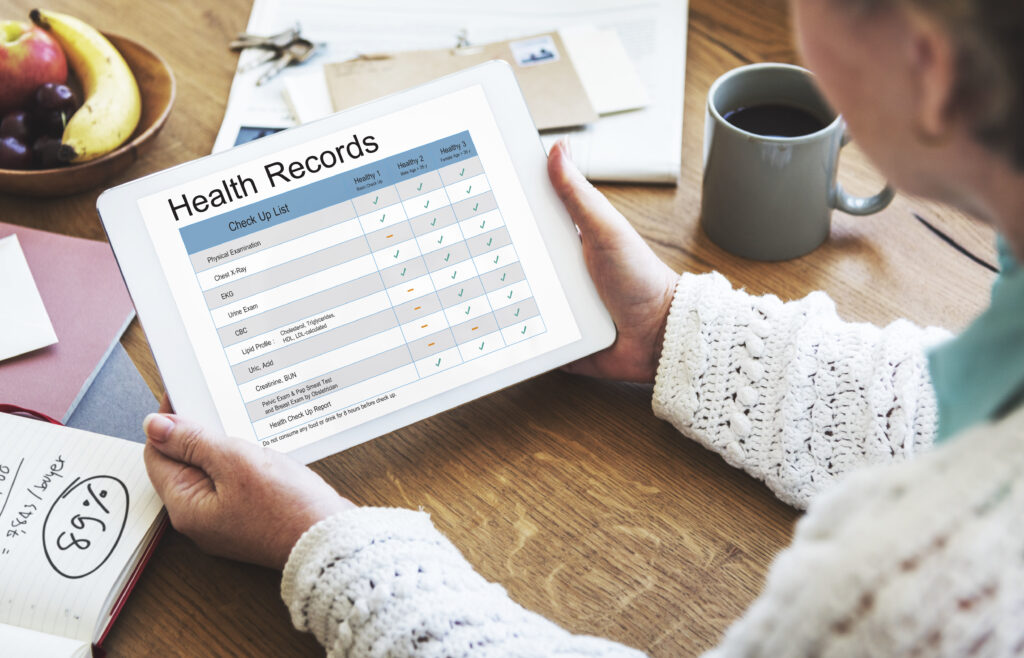
As digitalization occurs in the healthcare industry, the Electronic Health Record systems play a critical role in streamlining operations, improving patient care, and optimizing workflow. These systems integrate patient management software with advanced health information management tools to provide seamless, real-time access to medical records. By eliminating paper-based documentation, EHRs improve efficiency, reduce errors, and promote data-driven decision-making. In this guide, we will explore what EHR systems are, their advantages, types, challenges, and their future role in the evolving healthcare system. What Are Electronic Health Record (EHR) Systems? Electronic Health Record Systems are digital platforms that store, manage, and retrieve patients’ medical history, treatment plans, laboratory results, and other important health information. These systems are designed to enhance the efficiency of the healthcare system by providing healthcare professionals with real-time access to patient records. EHR systems go beyond simple documentation by integrating patient management software that facilitates scheduling, billing, and prescription management. They enable easy communication among healthcare providers, ensuring better coordination of care. Additionally, they help in maintaining regulatory compliance and data security through robust health information management practices. As the demand for digital healthcare solutions grows, EHR systems continue to play an essential role in medical institutions worldwide. Advantages of Electronic Health Record Systems Improved Patient Care EHR systems enhance patient care by providing accurate and up-to-date medical histories, reducing errors, and supporting evidence-based treatment decisions. Doctors can access critical information such as allergies, medication history, and test results in real-time. Automated alerts and decision-support tools help in diagnosing and managing chronic diseases more effectively. Integration with the software ensures easy coordination between healthcare providers, leading to improved treatment outcomes. With EHRs, healthcare professionals can track a patient’s progress over time and adjust treatments accordingly. Moreover, electronic prescriptions reduce medication errors, improving overall patient safety. Increased Efficiency and Workflow Optimization By digitizing patient records, EHR systems eliminate the need for physical storage and manual paperwork and this significantly improves workflow efficiency. Automated documentation and recovery processes saves time for both medical staff and administrative personnel. Integrated health information management tools streamline appointment scheduling, billing, and insurance claims processing. This reduces administrative burdens, allowing healthcare professionals to focus on patient care. Additionally, EHRs minimize redundant tests by providing instant access to past diagnostic results. Real-time data sharing among departments ensures smooth coordination and faster decision-making. Enhanced Data Security and Compliance EHR systems incorporate advanced security measures such as encryption, access controls, and audit logs to safeguard patient information. Compliance with regulatory standards like HIPAA and GDPR ensures the confidentiality and integrity of medical records. These systems offer role-based access, restricting unauthorized personnel from viewing sensitive data. Cloud-based EHR solutions provide secure data backups, preventing loss due to hardware failures or cyber threats. Regular security updates and monitoring further enhance protection against data breaches. By maintaining accurate and secure records, EHR systems help healthcare organizations build patient trust and regulatory compliance. Better Coordination and Communication Among Providers EHR systems improve coordination between primary care physicians, specialists, and other healthcare providers by enabling better data exchange. Instant access to shared records ensures that all involved professionals have a complete understanding of a patient’s medical history. This reduces duplication of tests and prevents conflicting treatments which help in enhancing patient safety. Telemedicine integration within EHR systems further improves communication, especially for remote consultations. Enhanced interoperability between different healthcare facilities ensures continuity of care for patients across various settings. Reduced Costs and Resource Utilization The adoption of EHR systems leads to cost savings by eliminating paper-based documentation, reducing administrative expenses, and optimizing resource allocation. Automated processes lower staffing costs by minimizing the need for manual data entry. EHRs reduce duplicate testing and unnecessary hospitalizations, saving both patients and healthcare facilities significant expenses. Digital billing and automated insurance claim processing speed up reimbursements, improving financial efficiency. Furthermore, improved patient care and reduced readmission rates lead to long-term cost benefits. By optimizing workflow and reducing inefficiencies, EHRs make healthcare delivery more cost-effective. Types of Electronic Health Record Systems 1. Cloud-Based EHR Systems Cloud-based EHR solutions store patient data on secure remote servers, allowing access from any location with an internet connection. These systems offer scalability, reduced IT maintenance costs, and automatic software updates. These systems are ideal for healthcare providers looking for cost-effective and flexible solutions. They support interoperability by enabling smooth data exchange between different healthcare facilities. Additionally, cloud storage enhances disaster recovery capabilities by ensuring data backups. Security features such as encryption and multi-factor authentication protect patient information from unauthorized access. 2. On-Premise EHR Systems On-premise EHR systems store data within a healthcare facility’s internal servers, offering complete control over security and customization. These systems require higher upfront investment and IT maintenance but provide enhanced data privacy. Large hospitals and healthcare institutions prefer on-premise solutions due to their ability to integrate with existing infrastructure. Organizations can customize the system based on specific workflow requirements. Since data remains within the facility, these systems reduce dependency on third-party vendors. However, they require dedicated IT teams to manage updates, security protocols, and system performance. 3. Specialty-Specific EHR Systems Specialty-specific EHRs are designed to cater to the unique needs of particular medical fields, such as cardiology, dermatology, and paediatrics. These systems include customized templates, tools, and workflows customized to the specific requirements of different specialties. Specialty EHRs improve efficiency by streamlining documentation and diagnostic procedures for specialized treatments. They integrate with medical imaging and diagnostic devices relevant to the specialty. Physicians benefit from automated recommendations based on specialty-specific guidelines. These EHRs enhance patient outcomes by ensuring specialized treatment protocols are followed effectively. Read More: How Patient Management Software Helps Reduce Medical Errors Challenges in Implementing EHR Systems 1. High Initial Costs The implementation of EHR systems requires substantial financial investment in software, hardware, training, and ongoing maintenance. Small healthcare practices may find it challenging to allocate sufficient resources for adoption. 2. Data Security Concerns The risk of cyber threats and data breaches remains a major concern for healthcare organizations using digital records. Regular security audits and
Electronic Health Records vs. Hospital Management Software: What’s the Difference?
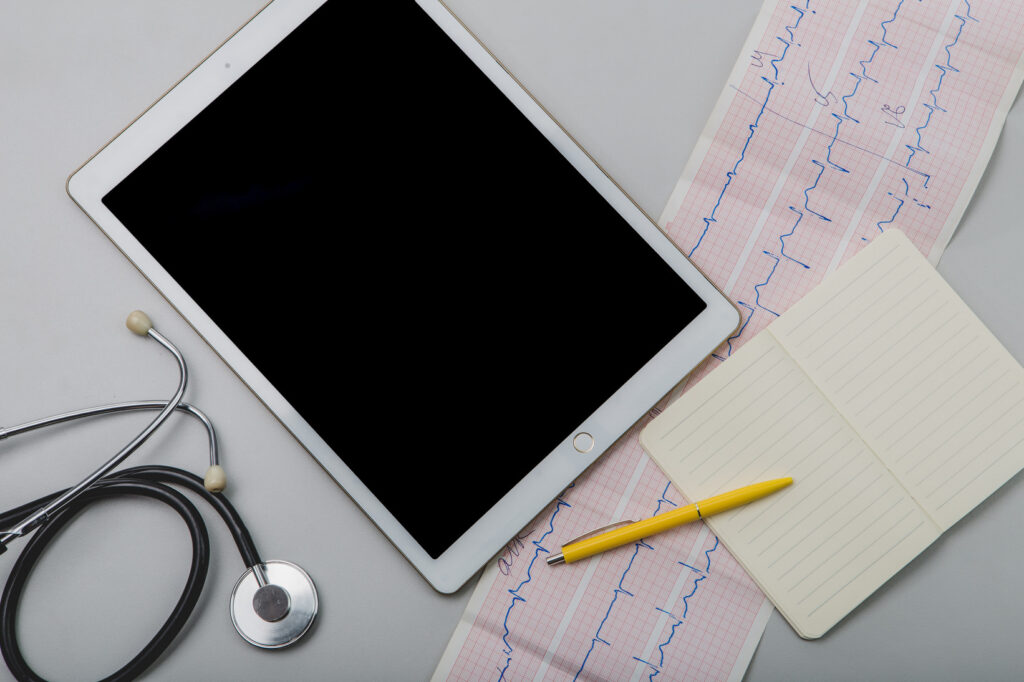
The healthcare industry has observed a significant change with the adoption of various digital tools that improve efficiency and patient care both. Among these health tools, electronic health records (EHR) and hospital management software (HMS) plays a very vital role in smooth medical processes. Along this, both tools have some essential functions which cater to different aspects of healthcare administration. To implement the right technology within a healthcare management system, first we have to understand their basic difference with their features which is necessary for.healthcare providers Electronic Health Records The EHR stands for Electronic Health Records, which records a patient’s whole paperwork in the digital form and replaces the traditional paperwork. These platforms assemble medical history, treatment plans, prescriptions, lab results, and diagnostic images, ensuring easy access to critical data and more. EHR is a well-integrated system that definitely improves clinical decision-making by providing real-time updates on patient health status. Along with this, it ensures conformity with regulatory standards, and provides smooth communication between medical departments and external healthcare institutions and ensures good care. Features and Benefits of EHR Hospital Management Software THe HMS stands for Hospital Management Software, that provides a more comprehensive solution that goes beyond medical records. It integrates various administrative and clinical functions within a healthcare management system, facilitating hospital workflows, patient engagement, and operational efficiency. This software streamlines with the best features like appointment scheduling, billing, resource allocation, and inventory management too. HMS is the combination of multiple functionalities as it improves coordination among different departments, better optimizing service delivery and improving healthcare outcomes. Features and Benefits of HMS Key Differences Between EHR and HMS Aspect Electronic Health Records (EHR) Health Management Software (HMS) Main Function Manages patient medical records Smoothly maintains administrative and clinical operations Scope Focuses on patient history and medical data Focus on scheduling, billing, inventory, and resource management User Base Healthcare providers and specialists Hospital administrators, doctors, and support staff Interoperability Connects with other medical institutions Integrates various hospital departments Regulatory Compliance Ensures data security and privacy Supports operational compliance with healthcare laws How to Decide the Right Solution for Healthcare Facilities Selecting between these two technologies depends on the specific needs of a healthcare facility. Hospitals or institutions, want to maintain efficient data recording and restore patient care will benefit from EHR. However, institutions looking to optimize operations, manage financial transactions, and improve workflow efficiency require a healthcare management system move with HMS functionalities. Outcome The successful integration of digital solutions ensures perfect healthcare delivery and better patient experiences. EHR plays a pivotal role in clinical documentation and regulatory compliance, while HMS offers a broader scope by managing overall hospital operations. While deciding the appropriate solution, it totally depends on organizational requirements and long-term goals. An effective software for hospitals combines the strengths of both, ensuring enhanced efficiency, improved patient outcomes, and a well-coordinated medical environment.
Hospital Management Software vs. Traditional Systems: Which is Better?

The modern healthcare industry, hospitals and medical institutions face significant challenges in managing their operations efficiently. Previously, to handle patient records, billing, and administrative processes, hospitals concentrated on manual working and paperwork. However, with the evolution of hospital management software, healthcare facilities are shifting towards digital solutions to enhance productivity and patient care. In this blog, we will compare hospital management software with traditional hospital systems, highlighting their advantages, disadvantages, and the impact they have on hospital administration and patient experience. Traditional Hospital Management Systems The traditional hospital management systems prefer to do manual working. Previously people manually did recording of patient data, documentation, billing, managing appointments and inventory, etc. Key Features of Traditional Systems Challenges of Traditional Systems Hospital Management Software The modern Hospital management software (HMS) is a digital solution designed to automate and make it easy to handle hospital operations, improving efficiency, lessening errors, and improving patient care. The HMS integrates multiple sections of the hospital like patient registration, appointment scheduling, billing, inventory, and electronic health records (EHRs). Key Features of Hospital Management Software Comparing Traditional Systems vs. Hospital Management Software Basis Traditional Hospital System Hospital Management Software Patient Records Paper-based, chances to loss data Digital, secure, easy to maintain Appointment Scheduling Do manual which is time-consuming Automated and do real-time scheduling Billing & Payments Do manually and have higher chances of errors Integrated system, automated and error-free Data Accessibility Limited to files in the hospital Data can be accessible from anywhere, anytime Operational Efficiency Requires more staff and effort Streamlined automated workflow Telemedicine This option not available, you have to go directly to the medical shop Proper integrated telehealth services with consultation Why Are Hospitals Moving Towards to Hospital Management Software? For providing better healthcare services and their growing patients demands and regulatory compliance requirements, hospital management software is becoming the preferred choice over traditional methods. Here’s why hospitals are making the switch: Better Patient Care & Engagement: A hospital management system improves patient experience through faster registration, quick access to medical records, and digital prescriptions. Patients can book appointments online, reducing long wait times and improving satisfaction. Higher Accuracy & Reduced Errors: Manual hospital systems have more chances of human errors in billing, record-keeping, diagnosis, etc. But due to HMS software, the things are automated and ensure accurate medical records, billing, and reporting. Improved Hospital Administration: A software for hospital management integrates all departments and improves communication between the doctors, nurses, pharmacists, and administrative staff. All these results in better coordination and helps to make better decisions. Cost Savings & Resource Optimization: With the help of hospital management software, hospitals save their operational costs by reducing paper-based work, minimizing manual labor, and optimizing resource allocation. Compliance & Data Security: In HMS, there are advanced security features like encryption and multi-factor authentication to ensure patient data safety. Also HMS solutions are designed to comply with healthcare regulations such as HIPAA, NABH, and GDPR. Read More: Hospital Management Software: Transforming Healthcare Operations The Future of Hospital Management: Digital Transformation The adoption of hospital management software is not just a trend; it is the future of healthcare. Emerging technologies such as AI-powered analytics, cloud computing, IoT-based health monitoring, and blockchain for medical records are shaping the next generation of hospital management solutions. Conclusion: Which is Better? While traditional hospital management systems have been in use for decades, they come with several limitations such as inefficiency, errors, and high operational costs. On the other hand, hospital management software offers a scalable, secure, and automated solution that enhances hospital operations, reduces costs, and improves patient care. If you are a hospital administrator looking to transition to a hospital management system, now is the right time to embrace digital transformation and future-proof your healthcare facility with Roojh. Ready to upgrade your hospital operations? Contact us today to learn more about the best hospital management software for your needs!
The Essential Role of Hospital Management Software in Modern Healthcare

In today’s fast-paced healthcare environment, efficiency and accuracy are more important than ever. With the growing demand for better patient care and streamlined operations, hospitals and clinics are turning to technology to bridge the gap. Hospital management software (HMS) has emerged as a cornerstone of modern healthcare, revolutionizing how facilities manage their daily activities. What is Hospital Management Software? Hospital management software is an integrated solution designed to streamline and automate the various operational processes in healthcare facilities. It covers a broad spectrum of functionalities, including patient registration, appointment scheduling, medical record management, billing, and more. By bringing these processes under one roof, HMS minimizes errors, saves time, and enhances the overall efficiency of the institution. Key Benefits of Hospital Management Software Roojh: A Comprehensive Hospital Management Solution One of the standout players in this field is , a state-of-the-art hospital management software designed to meet the diverse needs of healthcare providers. Roojh offers a comprehensive suite of features that enhance both patient care and operational efficiency. Why Roojh’s Stands Out? Roojh is designed with flexibility and scalability in mind, making it suitable for healthcare facilities of all sizes. Its intuitive design ensures that both staff and administrators can adapt to the system with ease, reducing the learning curve and improving productivity. Additionally, Roojh’s emphasis on security and compliance gives healthcare providers peace of mind, knowing that sensitive patient data is well-protected. Roojh’s telemedicine integration has been particularly impactful in today’s healthcare landscape, enabling facilities to reach a broader patient base and provide care without geographical constraints. Its patient-centered approach ensures a seamless experience for both patients and providers, making it a preferred choice for modern healthcare facilities. Read More: Hospital Management Software: Transforming Healthcare Operations Why Hospital Management Software is Important in Modern Healthcare? The healthcare industry is no stranger to challenges. From managing patient influx to ensuring data accuracy, hospitals face constant pressure to deliver better outcomes. Here’s why hospital management software is indispensable: Conclusion Hospital management software is transforming the healthcare landscape by making operations more efficient, transparent, and patient-centric. Solutions like Roojh are at the forefront of this transformation, empowering healthcare providers to deliver exceptional care while managing resources effectively. Roojh not only addresses the operational challenges of healthcare facilities but also equips them with the tools needed for future growth. With its comprehensive features and patient-focused approach, Roojh is setting a new standard for hospital management software, making it an essential component of modern healthcare.
Hospital Management Software: Transforming Healthcare Operations
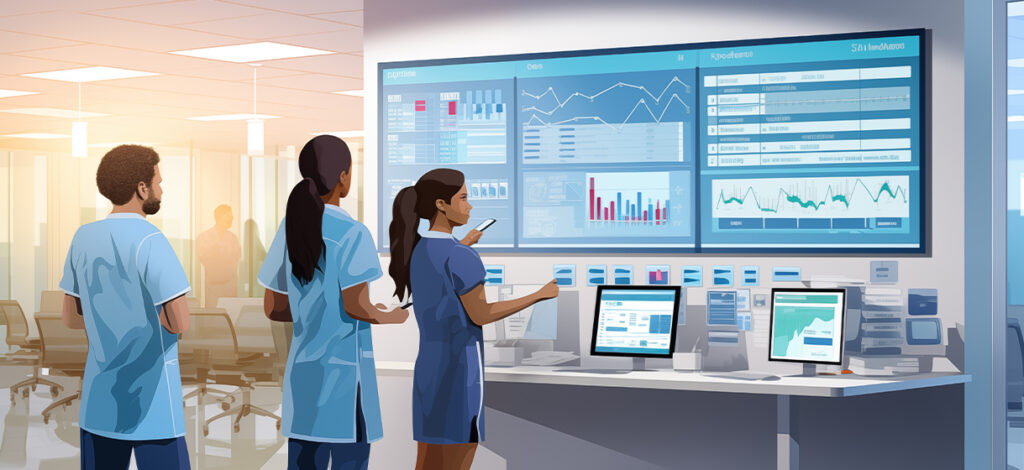
As the healthcare-theatre grapples with the disparities, there is no question that efficiency, accuracy, and smooth patient care will be the way to go. Hospital Management Software is a technological revolution that will help healthcare providers meet the latter’s needs. It performs operations in patient care where everyday activities will streamline operations, improve patient care, and optimize administrative tasks. Understand the importance of hospital management software in terms of features, and how it is reinventing the hospital industry. What is Hospital Management Software? Hospital Management Software is a complete digital solution for the day-to-day functioning of hospitals, clinics, and other health-care institutions. From patient registration to discharge, billing, medical records management, appointment scheduling, and inventory tracking, HMS simplifies and automates a variety of functions for improved efficiencies and accuracy. Features of Hospital Management Software Patient Management Patients can register, schedule appointments, and manage their medical history through a streamlined process. A centralized database for quick access to patient information. Electronic Medical Records (EMR): Images patient records digitally so they are available anytime, anywhere. data and confidentiality guaranteed. Billing and Financial Management Auto Payment for billings including claims and tracking insurance payments. Error reductions and financial transparency. Appointment Scheduling: Scheduling is much easier for both the patient and the providers of health services. Minimized appointment conflicts and waiting times are reduced. Inventory and Supply Management Tracks the inventory level of medicines, equipment, and supplies. Timely facilitation of procurement and avoidance of stock outs. Laboratory and Diagnostic Management Integrates laboratory and diagnostic workflow. It helps in reporting that is fast and accurate. Analytics and Reporting Provides in-depth insights into hospital operations. Doing in a way that supports making decisions based on data. Benefits of Hospital Management Software Better Patient Care By reducing the administrative load on the healthcare providers, they can devote more time and energy to patient care. Roojh – Your ultimate Hospital Management Solution It is Roojh that will serve you best when in search of the most trusted-hospital management software. Roojh has a broad set of the best features crafted to meet the unique needs of hospitals and healthcare providers. It has a user-friendly interface and strong functionality with a focus on securing data; therefore, it is preferred by healthcare institutions as they want to modernize operations. The reason that most Hospitals choose Hospital Management Software is; Since the healthcare industry always tends to face the threats of increasing patient satisfaction and improved mortality while constraining costs, Hospital Management Software does as follows: ● It provides real-time access to critical information● It reduces paperwork as well as manual errors● It improves adherence with regulatory standards Read More: The Essential Role of Hospital Management Software in Modern Healthcare Conclusion Hospital Management Software is actually a necessity today in one’s health care environment and not an option. The healthcare provider can now adopt a solution such as Roojh to streamline the operations within hospitals so that better care can always be given to the patient and, in this way, keep a hospital ahead of others in this profession. Be part of the promising future of health care, enjoy hospital management software and experience how it transforms your facility.
Roojh: The All-In-One Hospital Management System

The health industry continuously responds to the rising standards of efficiency and accuracy demanded even more today from healthcare facilities and their associated emerging desires for better and more convenient treatment. As more hospitals and clinics grow to supply a growing population, it will always be getting tougher for them to manage their operations. This is where hospital management software, like Roojh, earns its place-to streamline processes and transform the style with which an institution operates. What is Hospital Management Software? The hospital management software constitutes a complete electronic solution for linking and automating all the functions relating to the administration of a hospital, from patient records to appointment scheduling, billing, inventory, and so on. In other terms, HMS is just an integration of various functions in one system to enhance coordination among departments, reduction of errors, and provision of quality service. What Makes Roojh Unique? Roojh is a state-of-the-art hospital management software which redefines how healthcare organizations conduct their day-to-day activities. Using cutting-edge technology and intelligent features, Roojh is a comprehensive solution that meets the specific needs of hospitals, clinics, and multi-specialty centers. Essential Characteristics of Roojh Hospital Management Solutions Appointment Scheduling: Roojh saves the time of patients or doctors for fixing appointments by optimally employing the available resources. Patient Data Management: Managing patient records becomes easy with Roojh. This system keeps medical history, prescriptions, and diagnostic reports secure and retrieves them with just a few clicks. Billing and Financial Management: Billing is made easy through Roojh, including generating and tracking payment receipts with invoices; this brings with it accuracy and transparency. Inventory Management: Keep track of the stocks of available medical supplies, medicines, and equipment with the Roojh inventory management system to prevent wastage and ensure timely replenishment. Telemedicine: Roojh also provides seamless telemedicine, bringing health into homes for patients. Analytics and Reporting: The analytics feature from Roojh allows generating reports concerning the entire operation of the hospital, patient trends, as well as its financial health, hence supporting data-motivated decision-making. Read More: The Essential Role of Hospital Management Software in Modern Healthcare Roojh’s Hospital Management System Benefits Why There Is a Need for Solid Management Software in Hospitals? Hospitals need new management software because relying on old systems in the fast-moving contemporary healthcare environment ends in inefficiency, breaches of data, and frustrated patients. The modern hospital management software solutions such as Roojh are particularly equipped to handle: Conclusion Indeed, in this present age of necessary advancements, hospital management software is no longer a luxury but a necessity of pursuit by health institutions in the quest for excellence. With excellent innovative features backed by an uncompromisingly user-centric design layout, Roojh is well equipped to revolutionize the way hospitals perform their operations. Be it a tiny clinic or a vast multi-specialty hospital, whether you want to bring care at the next level or keep you updated with the latest trends in the competitive healthcare world, Roojh is here to make it all happen. Grab your future in healthcare management with Roojh today!
How Patient Management Software Helps Reduce Medical Errors
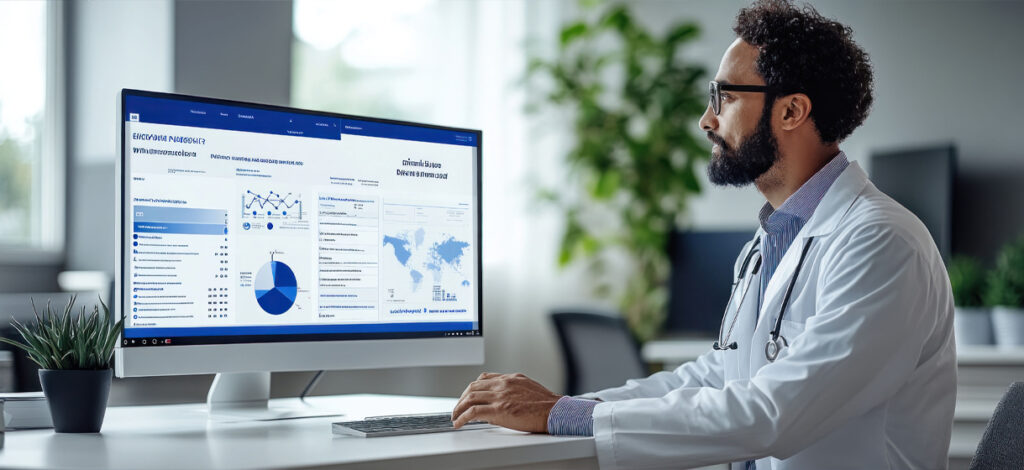
At present, healthcare remains a topic that is changing all the time- it is almost always patient safety. Medical errors do not merely put patients at risk, but they also waste health fortune built by health professionals. Hospitals and healthcare professionals can use Patient Management Software the great technology that enhances accuracy, speeds up health processes, and makes important documents available-towards minimizing medical errors. Let us now look at how patient management software will bring down the amount of medical errors dramatically and why Roojh is a great choice for health facilities trying to operate their facilities in an optimized manner. The Role of Patient Management Software in Reducing Errors Medical errors are common due to very poor communication, lacking information, or even slow processes. With patient management programme, these problems can be solved: Centralized Data Management The patient management software allows all patient information-gathering operations, such as history regarding prior illnesses, medications received, test results, and treatment plans, to be consolidated in one system-safeguarding against missing any important details or leaving anything incomplete so that healthcare providers can make better decisions with full knowledge of the patient’s condition. With Roojh, healthcare surfaces patients’ records anywhere at any time during the practice, ensuring reduced misdiagnosis or delay due to scattered information. Error-Free Prescription Management The most common types of medical errors are most frequently medication errors. Such accurate, legible prescriptions can be produced by patient management software, preventing the risks of handwriting errors.It also shows potential incompatibilities or allergic reactions based on indication for a certain treatment. Roojh has modern prescription tools to mitigate this risk, allowing doctors to give patients accurate and safe medication guidelines. Automated Appointment Scheduling and Reminders When someone misses an appointment or when their appointments overlap, the consultations turn rushed and such hurried consultation tend to have more chances of mistakes. Patient management software automates the scheduling, sends reminders to patients, and ensures a more seamless workflow between healthcare staff. Roojh makes appointment setting really easy, even allowing patients-and-providers to stay aligned without overlaps or missed care opportunities. Seamless Communication Efficient and effective communication among the medical practitioners, the patients, and the other departments is essential to reduce errors. The patient management software avails this seamless communication by offering a platform through which the updates, reports, and instructions are shared. For the management teams, Roojh makes clinical collaboration effective such that miscommunication can be limited to reducing possible errors. Compliance with Healthcare Standards The management programs for patients typically have within them compliance resources that comply with the regulations such as HIPAA or ABDM as in India. They keep patient data safe and cut down chances for errors which may arise due to outdated or non-compliant processes. With Roojh compliance features, healthcare providers would be aligned with the latest standards for accuracy and security in patient management. Read More: Patient Management Software: Enhancing Health Efficiency Why Choose Roojh? Roojh is the software that does more than all those regular patient management software. Roojh is a complete solution to the modern healthcare facility. Check out the features that makes Roojh different: Conclusion Speed is a defining characteristic of the healthcare system today. Therefore, one of the major approaches to improving patients’ outcome and enhancing trust in the provider is to reduce medical errors. Patient Management Software plays a vital role in this respect through streamlining operations, data management, and providing better communication among healthcare stakeholders. However, Roojh goes ahead, offering a very powerful, user-friendly solution keeping in view the peculiarities of modern healthcare. Investing in Roojh is to invest in a solution that, besides reducing errors, would enhance overall performance in your facility. Are you ready to improve patient care and cut down on medical errors? Don’t wait any longer to discover how Roojh can revolutionize your practice!
How a Healthcare Management System Simplifies Hospital Operations
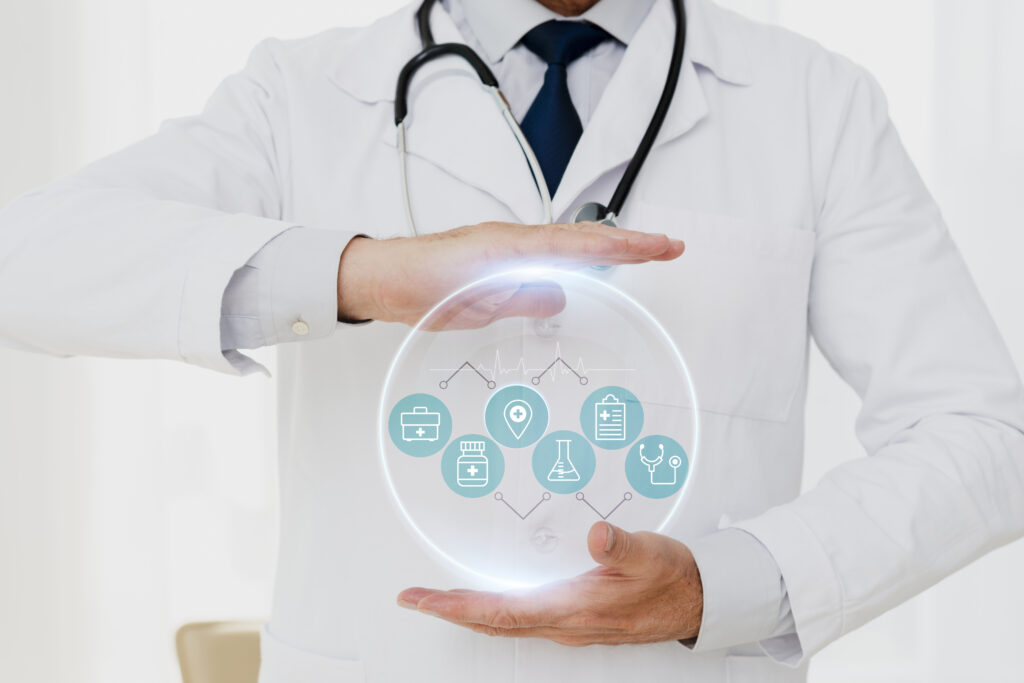
For the modern healthcare industry, many hospitals face challenges in operating efficiently in today’s modern world. Patient scheduling is one such example that can be largely managed with numerous administrative tasks, negatively affecting patient care. This is where a healthcare management system is developed. A healthcare management system streamlines the process, reduces errors, and improves the outcome from patient care by providing a comprehensive and digital platform to deal with all hospital functions. So, join us in the following blog as we discover the ways that a healthcare management system is simplifying hospital operations-and-solve how Roojh will join in redefining the way to transform health management. What Exactly is a Healthcare Management System? Healthcare management systems are software tools that enable various functionalities of a hospital to come together on a single platform-integration of functions like registration of patients, appointment scheduling, billing, inventory management, and medical records into a single unit-creating a complete web bridge solution between various hospital activities. While the impact on hospital staff may appear indirect, in reality, one of the most critical factors—the mechanics of patient interaction—is significantly enhanced by the Hospital Management Information System (HMIS). Specifically, HMIS acts as a vital link in the service delivery chain. In parallel, it empowers end-user groups who directly engage with patients. Moreover, it serves as a tool that effectively translates resource management efforts into meaningful, quality-driven interventions. Benefits of Healthcare Management System 1. Easy Patient Management A healthcare management system enables hospitals to keep full and updated patient records in storage, making it easy for a healthcare professional to locate and track information regarding the patient’s past. Forget long hours going through paper files. Everything is stored digitally with an HMS, reducing errors along with the quickness of information being accessed. Patients benefit from a smoother experience, while developing efficiencies of time in having quick access to medical records, and making appointment scheduling much easier in terms of ensuring that faster care is given without delays. 2. Automated and Simplified Appointment Scheduling Scheduling appointments is one type of activity that hospitals have to undertake in routine. A healthcare management system automatically integrates appointment scheduling, thus eliminating human errors and clashes in schedules. Patients book appointments online and automatically notify both the patients and provider on reminders. This helps reduce no-shows. Further, it ensures that resources are properly allocated in the organization. 3. Simplifying Billing and Payments General billing in hospitals is complicated in itself with multiple departments and insurance providers attached to it. A healthcare management system will obtain such hurdles from complicated billing. It would implement automated invoicing services and payment tracking. Clear and transparent billing allows accurate cost estimations for patients and insurance providers sufficing satisfaction and reducing confusion. Insurance claims are easier to process, yielding faster reimbursements. 4. Inventory Control Hospitals rely heavily on the goods, supplies, equipment, and sometimes drugs. An HMS tracks inventory right up to ensuring medications are always available when needed. Such automation will ensure hospitals avoid shortages and overstocking that could incur unnecessary costs or delays in treatment. How Roojh Enhances Hospital Operations Roojh is an advanced healthcare management system, which helps hospitals organize their functions through a simple interface with very effective features. This is the way Roojh brings uniqueness in every aspect : Total Management of Patients Roojh provides the complete management of all the patients in one place. It keeps all medical records, prescriptions, and test results in one place, easily accessible to the healthcare provider. This will ease the patient care process and will reduce unnecessary duplication of tests or treatments. Effortless Appointment Scheduling This is the most uncomplicated appointment scheduling system through which patients schedule or reschedule their appointments online. It sends automated reminders to patients and reduces no-shows in the hospitals. Straightforward Bills & Payments Automatic bills, payment tracking, and insurance claims for Roojh’s billing module mean less work for administrative staff, much transparency in billing, and a streamlined flow of finance-not only for the hospital but also for patients. Strong Reporting and Analytics With Roojh, one can derive diversified real-time reports of hospital operations concerning everything from patient demographics to financial performance. Such data will ensure informed decisions for efficient hospital management. Read More: How Healthcare Management Systems Enhance Patient Care Conclusion In a nutshell, Roojh can totally replace traditional manual operation of hospitals with a completely automated system. It establishes the clear-cut demarcation between patient care and record keeping through a financial processes streamlining aspect. Roojh is a total benefit for better service in hospitals along with cost cutting and minimizing errors into the system: With the advent of time, hesitation toward adopting a Hospital Management System (HMS) has become increasingly unnecessary. Today, hospitals must embrace such systems to remain competitive, operate efficiently, and deliver the most seamless and satisfying patient care experience. Furthermore, advanced solutions like Roojh enable hospitals to align with modern healthcare practices, ensuring an enhanced experience for both patients and healthcare administrators alike. Ready to maximize your hospital operations? Well, you can check Roojh and see where it can transform your healthcare facility today.

